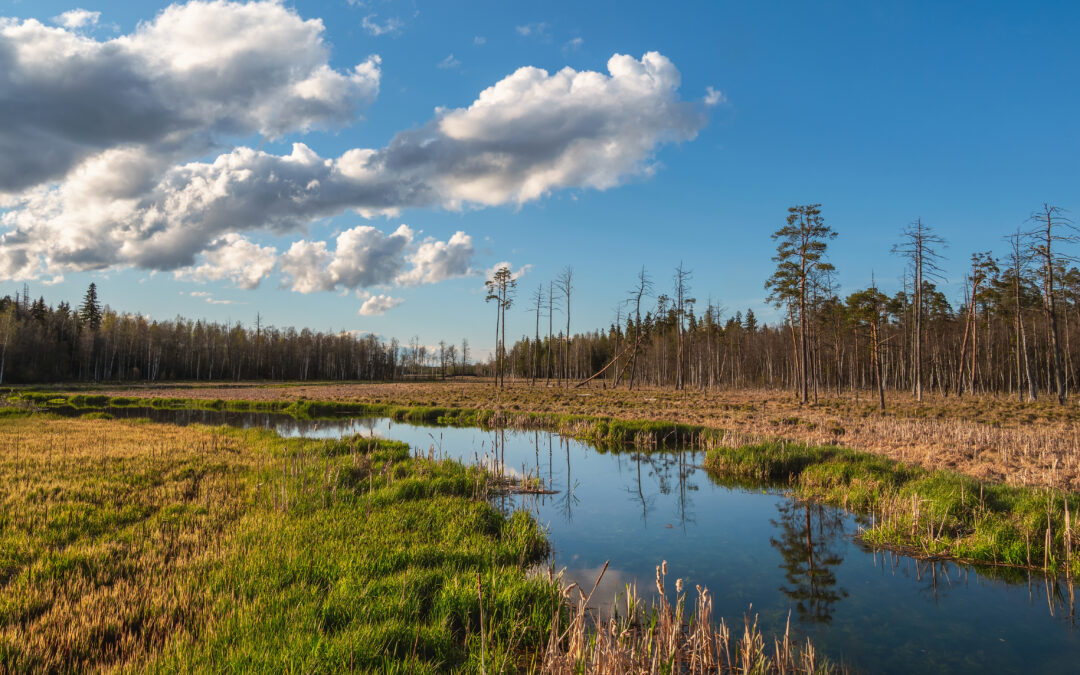When most people hear the terms “wildlife restoration” or “wetlands,” they think of fish, ducks, or maybe even mosquitos, but there is so much more to it than that!
The projects we work on at Midwest Wetland Improvements counteract the damage caused by human activity. We can help improve natural ecosystems while creating thriving habitats for wildlife.
Understanding Wetland Ecosystems
It’s important to understand that the term “wetlands” encompasses a variety of habitats, including wet meadows, swamps, marshes, and bogs. Defined as those areas inundated or saturated by surface or groundwater at a frequency and duration sufficient to support hydrophytic vegetation typically adapted to life in saturated soil conditions, wetlands provide critical functions such as water filtration, flood control, carbon storage, and breeding grounds for numerous species, including fish, ducks, frogs, turtles, insects, and plants.
Losing any piece of this ecosystem puzzle can have profound impacts on biodiversity, water quality, and climate regulation
The Need for Wetland Restoration
Human activities, including agriculture, urbanization, and industrial development, have led to the degradation and loss of wetlands globally. The U.S. Fish and Wildlife Service reported earlier this year more than half of wetlands in the lower 48 states are gone. This loss has not only led to the decline of many species dependent on these habitats but has also exacerbated issues like flooding, water pollution, and loss of biodiversity.
Wetland restoration has become a critical conservation strategy in an attempt to repair the damage done. Restoration aims to reestablish the natural hydrology, vegetation, and ecological functions of degraded wetlands, thereby creating a habitat conducive to wildlife and improving ecosystem services.
Wetland Restoration in Your Backyard
Many people consider wetland restoration a large-scale project, but that isn’t always the case. Many of the projects we work on here at Midwest Wetland Improvements are done on a smaller scale for an individual landowner.
For example, one of our recent projects helped an avid outdoorsman improve a degraded wetland dominated by reed canary grass by adding shallow wetland scrapes for wildlife habitat. We worked with him to design three individual scrapes through the linear sloped wetland as a series of wildlife ponds. This work attracted multiple species of ducks, while also improving the land and welcoming back a richer assortment of deer, turkey, blue heron, frogs, turtles, insects, plants, and more.
Work with Midwest Wetland Improvements to Restore Your Land
Restoring wetlands is an investment in biodiversity, climate resilience, and ecosystem health. By bringing these precious systems back to life, we can provide habitats that support diverse wildlife populations and enhance the ecological services that wetlands offer.
The benefits of wetland restoration extend beyond the boundaries of the wetland itself, contributing to a healthier, more balanced environment for all species. In a world facing unprecedented environmental challenges, wetland restoration is a crucial step toward sustainability and conservation.
Reach out to Midwest Wetland Improvements to learn more about how we can help you accomplish your goals of improving biodiversity, attracting new wildlife or addressing your conservation concerns on your land.


Recent Comments